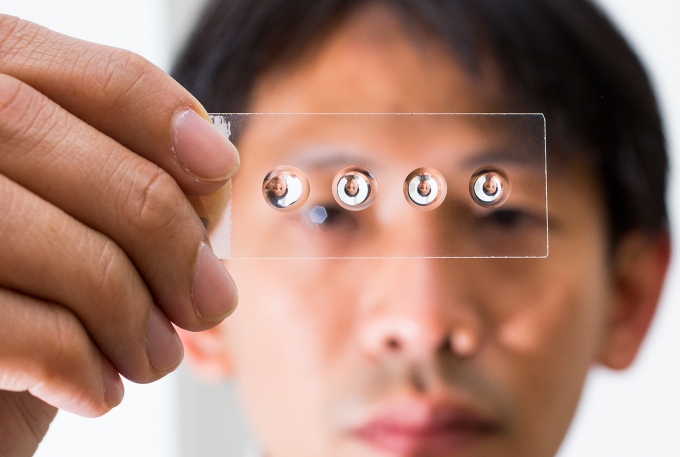Steve Lee has invented a simple and cheap way of making a high-powered lens that can transform a smart phone into a high-resolution microscope.
Costing less than a cent, the lenses promise a revolution in science and medicine in developing countries and remote areas.
The lens fabrication technique was invented by Dr Steve Lee from The Australian National University (ANU) Research School of Electrical, Energy and Materials Engineering, who collaborated with Dr Tri Phan from Sydney’s Garvan Institute of Medical Research to find ways to transform the lentil-sized lens into a medical imaging tool.
The lenses are made by using the natural shape of liquid droplets.
“We put a droplet of polymer onto a microscope cover slip and then invert it. Then we let gravity do the work, to pull it into the perfect curvature,” Dr Lee said.
“By successively adding small amounts of fluid to the droplet, we discovered that we can reach a magnifying power of up to 160 times with an imaging resolution of four micrometers.”
The polymer, polydimethylsiloxane (PDMS), is the same as that used for contact lenses, and it won’t break or scratch.
“It would be perfect for the third world. All you need is a fine tipped tool, a cover slip, some polymer and an oven,” Dr Lee said.
The first droplet lens was made by accident.
“I nearly threw them away. I happened to mention them to my colleague Tri Phan, and he got very excited,” Dr Lee said.

